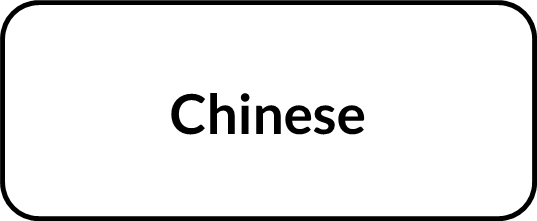Site Search
362 results for where to check completed case
-
Equimax Enhancements – Coming Soon
More updates for a better and stronger solution!
We have exciting news! Further to our October 5th product updates, we will be rolling out more changes to Equitable’s flagship Equimax whole life solution.
Stay tuned for more details, coming on December 10, 2024.
Transition Rules
Check out our Transition Rules for new and in-progress life applications, which take effect on December 7, 2024.
Questions? Contact your Equitable wholesaler. - [pdf] Ownership Change Form - S&R
-
Delegation Requests Now Available on EquiNet
We are excited to announce a new feature that will help make it easier for you to do business with Equitable Life.
This new feature allows you, to submit a delegation request through the “Access” tab under your EquiNet profile.
Once the delegation request has been completed, the specified people will be able to view and manage the policies of the Advisor who submitted the request, as long as they have codes of their own within the system.
Please contact the customer service team at customerservice@equitable.ca for more information. - [pdf] Managing a Retirement Savings Plan tax refund
-
This year’s RSP contribution deadline is March 1, 2023
The RSP deadline is fast approaching so whether you are using paper or EZtransact™ here are some important things to remember.
Issuing New Policy with EZcomplete®-
All online applications must be digitally signed and submitted and have a date stamp no later than March 1, 2023.
Issuing New Policy using Paper Application-
For contributions to qualify for the first 60 days, all paperwork must be completed and signed by March 1, 2023. Equitable Life must receive all paperwork by March 7, 2023.
Deposits to Existing Policy-
Advisors can setup a one-time or recurring deposit or edit an existing pre-authorized debit already in place using EZtransact. Online deposits must be made and have a date stamp by March 1, 2023, to qualify for a 2022 tax receipt.
-
New to EZtransact? Try our EZtransact Practice Site to see how EZ it is to use.
-
-
Clients can make online deposits to Equitable Life® through their financial institution’s online banking service. Online deposits must be made and have a date stamp by March 1, 2023, to qualify for a 2022 tax receipt.
-
Clients can also make a new deposit to an existing policy by cheque. The cheque must be dated and signed by March 1, 2023. Equitable Life must receive the cheque no later than March 7, 2023.
If online banking is being used to fund the policy – either topping up an existing policy or opening a new policy – the online banking transaction must be completed by March 1, 2023, to receive a 2022 tax receipt.
Please note that cheques and other paperwork cannot be backdated. They must be completed and signed by March 1, 2023, to qualify for a 2023 tax receipt.
Don’t forget about the Equitable Life RSP Grow Your Future Contest. We hope you have a great RSP season!
® denotes a trademark of The Equitable Life Insurance Company of Canada. -
-
This year’s RSP contribution deadline is February 29, 2024
The RSP deadline is fast approaching and here are some important things to remember.
Issuing a New Policy with EZcomplete®
All online applications must be digitally signed and submitted and have a date stamp no later than February 29, 2024.
Issuing a New Policy using Paper Application
For contributions to qualify for the first 60 days, all paperwork must be completed and signed by February 29, 2024. Equitable® must receive all paperwork by March 8, 2024.
Deposits to an Existing Policy
Advisors can set up a one-time or recurring deposit or edit an existing pre-authorized debit already in place using EZtransact™. Online deposits must be made and have a date stamp by February 29, 2024, to qualify for a 2023 tax receipt.
Clients can make online deposits to Equitable through their financial institution’s online banking service. Online deposits must be made and have a date stamp by February 29, 2024, to qualify for a 2023 tax receipt.
Clients can also make a new deposit to an existing policy by cheque. The cheque must be dated and signed by February 29, 2024. Equitable must receive the cheque no later than March 8, 2024.
If online banking is being used to fund the policy – either topping up an existing policy or opening a new policy – the online banking transaction must be completed by February 29, 2024, to receive a 2023 tax receipt.
Please note that cheques and other paperwork cannot be backdated. They must be completed and signed by February 29, 2024, to qualify for a 2023 tax receipt.
If you haven’t already done so, consider EZcomplete and EZtransact our easy and fast online application and deposit tools to make life easier this RSP season.
For more information, please contact your Regional Investment Sales Manager.
® or ™ denotes a trademark of The Equitable Life Insurance Company of Canada.
Posted February 14, 2024 - [pdf] Three steps to packaging large cases for success
- About
-
Life insurance as an asset class - The mutuality edition
Equitable in partnership Wayne Miller, BMATH, ASA
The concept of viewing life insurance as an asset class only became mainstream in Canada 12 years ago, after Wayne Miller, BMATH, ASA, made the case for it in an industry magazine article.
Has anything changed in the past decade? Does a mutual company vs. a stock company make a difference? Equitable has been collaborating with Wayne to provide an answer – which is provided in this follow-up article to his original piece.
- [pdf] B2B Investment Loan Product Brochure



